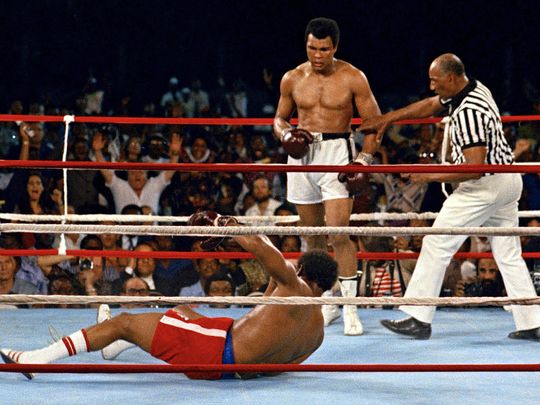Successful Nonprofit Arts Organizations, Like Successful Buildings, Depend on Successful Hierarchies
Level One:
Bricklayers. Carpenters. Stagehands. Electricians. Actors. Musicians. Painters. Singers. Writers.
Easy to find hacks. Difficult to find experts. Project-based.
Level Two:
Foremen. Department heads. Designers. Curators. Musical directors.
Small universe of successful ones. More skills required. Still project-based. Work toward a larger goal than Level One, namely a finished piece. Excellent collaboration skills.
Level Three:
Contractors. Directors.
Smaller universe still. Hire and manage Level One and Two (no requirement to perform at their skill level). Work toward a slightly larger picture, although still project based.
Level Four:
Architects. Executive/Artistic/General/Producing Directors.
Scarce universe of specialists. Determine “what.” Hire Level Three – several Level Threes, in fact. Understand projects, themes, and cohesion.
Level Five:
Owners. Boards.
Tiny, zealous universe. Hire Level Four. Determine “how.” Has personal stake.
Level Six:
The Community. The Mission.
Top of the hierarchy. Determines “why.”
Happy Dependence Day – In the USA, the Arts Reflect Our Need for Each Other
The American Dream is built on dependence (Independence Day and elections notwithstanding).
The USA is Blanche DuBois and the “kindness of strangers.” We’re Willy Loman. We’re Fanfare for the Common Man. Revelations. Hamilton. Smoke Signals. Angels in America. Our successes depend and are dependent on the joy, madness, and desires of others.
The monarchy doesn’t choose our art; we do.
American art depends not on individual brilliance, even though there are brilliant individuals. Our best art provides impact.
Mavericks provide almost no impact. Collaborations do.
Patrons deign to “provide for.” Supporters want to “identify with.”
True, there are Americans that call themselves mavericks and patrons. Some folks prefer their terminology shrouded in cobwebs.
But for the rest of us, we know what we are. Even better, we know why. Our best arts nonprofits reflect “We, the People.”
Nonprofit Arts Strategic Plan Consulting: What You Say and What They Hear
Consultant: A strategic plan should generally include the following sections: mission statement; outline of goals, objectives, and activities; assessment of current resources; and strategic analysis.
- All nonprofits are mission-driven; take care to define your mission clearly.
- Having activities or programs clearly defined will help your nonprofit communicate with the public. Remember that activities and programs flow from your mission.
- Assess all of your resources — including money, people, expertise, skills, and other intangibles.
- “Strategies” are practical ideas about how to make the best use of your resources to achieve your goals.
Them: Blah-blah-blah MONEY, blah-blah-blah GOALS.
Result: A “strategic plan” proclaiming the need for more money with no action plan (except, of course, to raise money) and no justification (except, of course, to raise money).
In answer to your next questions:
- Way too often.
- They blame the consultant.
Transformational Persuasion: Muhammad Ali, George Foreman, Donald Trump, Hillary Clinton, and Why It Matters – Especially When You’re Running an Arts Organization
Muhammad Ali died last week. A quote from a Zairian in “When We Were Kings.”
“George Foreman? We had heard he was a world champion.
We thought he was white, then we realized he was black, like Ali….
Ali said [about Foreman], you’re the out-of-towner here.”
Nonprofit leaders that manage organizations, programs, and people well can be quite successful. But not transformational. Transformational leaders effortlessly persuade with passion about the mission, not the statistics. Their material requires no script, just practice to remove the “ums” and “uhs.”
Trump, for example, vigorously (and effortlessly) transforms experienced opponents into “out-of-towners.” Clinton relies on effective policy, experience, and “being right.”
Passion KOs policy every time. Ask George Foreman.
Doesn’t your arts organization’s constituency deserve the most transformative experience you can offer? Or do you settle for production excellence and competence?
Talk to Me Like I’m 10: a Lesson in Long-Term Planning for Artistic Directors and Board Chairs
Does long-term planning cause a rift between your artistic director and those other people?
Does it cause discord between your board chair and those other people?
Seen all the time among arts charities: carefully (and successfully) executed annual development plans reduced to rubble after the board institutes a high-priced capital campaign. The capital campaign sucks up all in its path, causing 5 years of stakeholder repair. Indispensable Chair happy. Staff leaves.
Artistic directors substituting their taste for vision and their personal and professional relationships for core values. Idiosyncrasy obviates mission. Indispensable AD happy. Board leaves.
Both cases: company imperiled, stakeholders leaving.
Time to create an action plan, written at a 5th grade level. Make it about impact rather than income. Test the theory that your arts nonprofit is indispensable. Make sure that your most important stakeholders don’t leave.
Special 2016 “Alan Harrison’s Birthday” Edition: Pack Up the Babies and Grab the Old Ladies – And an Easy-To-Fulfill Wish List

I was born on May 14. Conceived on a hot August night. Neil Diamond would’ve been proud. He was old enough to have a kid then, so…who knows? Brother Love? Are you my papa?
From him, I want flowers.
From you, I want (this is your cue):
- A 137-word card. ( <–Yes, that’s a link.)
- Share your favorite 137 Words post with your social network (that’s “share,” not “like”).
- To join a great company with a great mission. In Seattle.
- Health for The Kid.
- Guidance for The Kid.
- The love of my life to be happy, fulfilled, and curious. You know who you are.
- The ability for you to guide your favorite nonprofit to safety, security, and success.
- Brilliantly measurable missions, better than you believe you’re capable of.
- Complete, successful execution of those brilliant new missions.
- Pie, not cake.
Nonprofit Arts Executives: After the Ask (for anything, actually), It’s Fast “Yes,” Slow “No”… Try a Slow “Yes” Instead
If you don’t hear right away, it’s probably “no.”
That goes for asks, offers, hiring, and anything else you require.
And that goes for you, too, when your stakeholders ask, offer, hire, and anything else they may require.
Reflection is the predictable path toward rationalization to the “no.” This is why the phrase “upon reflection” is almost always followed by a version of “we’ve decided not to change.” After all, as a rule, it’s easier not to change than to take a risk.
Many arts charity executives preach the glory of “managed risk” (an oxymoron, of sorts) and value fiscal responsibility above social impact. To be clear, social impact is central to the success of the mission; fiscal responsibility is a valuable business practice.
If “yes” leads to greater impact, then stop saying “no”… especially upon reflection.
Arts Organizations: 137th Post, 137 Thanks, and 137 (of Other People’s) Words That Guide Inspiring Leaders
“We must reject the idea — well-intentioned, but dead wrong – that the primary path to greatness in the social sectors is to become “more like a business.” Most businesses…fall somewhere between mediocre and good.” (Collins)
“If a man does not keep pace with his companions, perhaps it is because he hears a different drummer. Let him step to the music which he hears, however measured or far away.” (Thoreau)
“People don’t buy WHAT you do, they buy WHY you do it.” (Sinek)
“When they say things like, we’re going to do this by the book, you have to ask, what book? Because it would make a big difference if it was Dostoevsky or, you know, ‘Ivanhoe.'” (Anderson)
“‘To be is to do.’ (Socrates) ‘To do is to be.’ (Sartre) ‘Do be do be do.’ (Sinatra)” [Vonnegut compilation]
Face-palms in the arts world: Oh, somewhere in this favored land the sun is shining bright; the band is playing somewhere, and somewhere hearts are light

Somewhere…
- A managing director is face-palming because the budget draft is still a departmental wish list;
- A marketing director is face-palming because the artistic director decided that he knew more about marketing than the marketing director;
- A development director is face-palming because the board chair has fashioned a multi-million dollar “capital” campaign (actually, a “get-out-of-debt” campaign) with no feasibility study, no regard to the annual development campaign, and no accountability to anyone else;
- An artistic director is face-palming because the plays she wants to do don’t jibe with the mission of the company;
- A board member is face-palming because every meeting is about reporting, money, by-laws, and the gala;
And somewhere, performing arts audiences and constituents are collectively face-palming, hoping against hope that the arts folks in their region remember that for them, it’s about the art.
Life on the Unraveling Nonprofit Arts Fringe: Why Hiring Experience and Guile Trumps Everything Else
Actor Hugh O’Brian is said to have coined “The 5 Stages of an Actor’s Career;”
- Who is Hugh O’Brian?
- Get me Hugh O’Brian.
- Get me a Hugh O’Brian type.
- Get me a young Hugh O’Brian.
- Who is Hugh O’Brian?
We’re in contact with hundreds of highly-experienced, resilient people who have made a career in the arts – and they’re having difficulties getting back into the field.
Some of it is ageism. Boards use headhunters to find smart young guns to lead departments or organizations — only to find that instead, they’ve hired brilliant 2-year placeholders with few people skills, entitlement issues, little flexibility, and quick parachutes.
Studies show those >50 stay longer than those under <40, are more productive, have better improvisational skills and flexibility, and are likelier to bring success.
Forget headhunters. Do your own search. Hire someone better than you.
If You’re _____________, Then Your Nonprofit Arts Organization is Probably Unsustainable (with apologies to Jeff Foxworthy)
- not paying your executive director because s/he is independently wealthy and actually donates 6 figures to the company;
- working 70 hours/week every week and see nothing wrong with that;
- hiring part-time employees and expecting them to work full-time free of charge;
- of the belief that your employees are less important than your equipment or your building;
- insisting that anyone besides your marketing director is the final word on your marketing;
- keeping your artistic director away from donors because s/he doesn’t know how to interact with them;
- in the mindset that any of your people are more important than any other of your people;
- playing “Dialing for Dollars” to meet your payroll;
- arguing that “keeping the base” is more important than expanding the audience, while…
- thinking that you can do both;
- sweating a little right now after reading this post.
Organizational Health Can Be Measured by the Number of Donors Who Don’t Have to Give to Your Arts Organization
How many non-board (or non-ex-board) members give to your arts organization?
How many non-staff members?
How many non-parents (if you do activities that include children)?
How many people who don’t attend your gala or other special event?
How many people who refuse donor benefits?
In other words, how many people donate simply based on your mission, programming, and activities; or by trusting a stakeholder of your mission, programming, and activities without expectation of a return?
Count the households of donors who donated all on their own. If the number is small, create a special campaign to draw them in, even if the donation is a simple $50. And thank them – they’re giving for no reason at all, except for unconditional love.
Ultimately, the health of your organization is measured by the number of those who unconditionally support it.
Change Management and the Psychology of Surprise
I’m continually surprised by surprise announcements.
Seattle does not tolerate surprise announcements well. I’m not sure of a place where surprises go well, but in a city fomenting the crucible of passive-aggressive behavior (see this article for some fun), change without tortuous committee meetings is, well, gauche.
Recently, KUOW (Greater Seattle NPR news/talk licensed by the University of Washington) issued a surprising announcement that they’ve signed a deal to buy KPLU (Greater Seattle NPR news/jazz licensed by Pacific Lutheran University). Evidently, Pacific Lutheran University’s broke.
FYI: KUOW once purchased another non-commercial station, KXOT, to carry its KUOW2 programming. That failed.
Listeners/Members hate the idea and said so at a meeting on November 23. KPLU kept soliciting memberships even after the deal was signed.
KUOW comes off as untrustworthy, KPLU as desperate.
Surprise!
Stay tuned.
The Christmas Arts Season is Almost Here: Time for Much Mooing and Missions Drifting Higher than the Plowed Snow Blocking your Driveway
Once there was a theatre company that produced new plays. However, during the holiday season, they produced “A Christmas Carol.”
Foundation leaders that supported this company asked one day, “Why do you produce ‘A Christmas Carol’ when it has nothing to do with your mission or the rest of your activities?”
“Because,” said a truthful board president, “it’s our ‘cash cow.’ And we need to milk it for all its worth to pay for everything else we do.”
“Oh,” said the foundation leaders. “Does it?”
“Yes,” said the president. “It’s a good thing, too.”
The leaders huddled together.
“That’s wonderful,” they said. “It follows, then, that we can now fund companies whose mission aligns with ours. With your ‘cash cow,’ you don’t need us. Thank you!”
And then they cut funding to the theatre company to zero.
Differentiating Between What’s Great About the Arts and What’s Great About YOUR Arts Organization
You can look anywhere to discover what’s important about the arts. Try here, here, here, here, and here for starters.
The key to “sustainability” (which, as previously written, is not “survival”) is proof that your particular arts charity is achieving specific community goals.
Each social service and social justice charity measures its results toward the execution of their mission. Those results have a direct link to funding and community support. Your arts charity, then, must find results that apply specifically to your organization.
Charitable results cannot be measured by paid attendance or positive economic impact. Those are commercial results and byproducts — data used by sports teams to get cities to build them stadiums or by entertainment conglomerates to allow regions to let them build casinos.
So what makes your arts charity charitable? Answer that and you’re 99% there.
Confusing the Messenger with the Message: Artistic Direction Fulfills the Arts Organization (Not Vice-Versa)
Being a great director has little to do with being a great artistic director.
Directors direct projects. Artistic directors use a collection of projects to fulfill a mission that serves a community. These are completely separate skills.
ADs who direct some projects for their own company risk treating those projects as precious. Too often, they break rules for their project (organizational mission, budget, marketing, etc.) that they would never allow an “outside” director to break.
And in too many cases, when the identity of a nonprofit arts organization is too closely entangled with the vision of an artistic director, the organization’s brand is that much more difficult to recuperate when inevitable leadership change occurs.
After all, succession is not merely an artistic director handpicking a successor, is it? A company is greater than any individual leader, right?
The Psychology of Being Last and 4 Other Ways to Level the Board Meeting Room Table
 Board meetings are often reporting festivals. Endless polite reports reminiscent of “what I did last summer” essays from the first day of elementary school. It’s too bad.
Board meetings are often reporting festivals. Endless polite reports reminiscent of “what I did last summer” essays from the first day of elementary school. It’s too bad.
Calculate the hourly consulting rate of the people in the room (for example, 15 board members x $100/hour = $1,500/hour). At $1,500/hour, do you want to talk about the past or the future?
Board members, inside the meeting room…
- Never do what the last person in the conversation advocates. It’s a trick manipulative people do.
- Consensus is not unanimity; votes needn’t be unanimous. After the decision is made, however, everyone needs to back it.
- No devil’s advocates; take responsibility for your disagreement.
- Read the ED’s report beforehand. EDs: issue your report at least a week before the meeting.
- Your ED is not responsible for writing and executing your strategic plan. You are.
“In This Scene, Could You Be a Little Funnier?” – A Perspective on Performance Reviews
“Fire ’em the first time you think about it.” This was the mantra of the board chair of a company with which I was affiliated. I’ve always appreciated the portion that means that I should know when things are not working with a company or individual – from the perspective of employer or employee.
Which brings me to performance reviews. Gack. Many formal performance reviews within arts organizations waste time and energy and breed unnecessary anxiety. That’s not to say that you shouldn’t do them – but do them continually rather than once a year or when a contract demands it.
If your company has a horrible work environment, a performance review is about as helpful as a Band-Aid on a heart attack. Similarly, if the environment is open-minded, so should your inter-reactions. You’ll know if it’s working out.
Quantifiable Outcomes and Social Impact Applies to All Nonprofits – Including Arts Organizations
Oh, I can hear it now.
“See?” they’ll say. “People don’t care about outcomes when they make donations. The Washington Post said so. Ergo: we don’t need outcomes.”
To come to that conclusion is just whistling past the graveyard.
Remember these hard facts:
- The arts are not mentioned in section 501 (c) (3) of the US tax code (you know…the law). The arts fall under “charitable organizations,” which require a measure of public good.
- Using the arts as a cover for an individual’s vanity vision is fine, as long as it’s a commercial venture. Once you pull the taxpaying public into it, ethics demand an outcome.
- The arts can be transformative, both on a commercial and nonprofit level. What differentiates the nonprofit is that a measurement of positive change of the human condition is necessary to rationalize funding.
Don’t Be a Company with a Mission; Be a Mission with a Company
I’ve been reading a number of articles discussing arts charity marketing as a whole-company tool, not a ticket-sales tool. Here’s one from TRG.
I was disappointed by Advancement Northwest’s Major Gifts Symposium keynote speakers’ idea of including donors within a charity’s mission.
I have been met with resistance from key artistic and production personnel who have been taught that “we do the art and everything else is a necessary evil.” (Actual quote.)
It’s just human nature for stakeholders to overvalue their contribution. Board members do it. Employees. Volunteers. Audience. Artists. Donors.
Here’s the thing: arts nonprofits that are created to solve a societal problem don’t have these issues. These issues fester when the company is created prior to creating (and rationalizing) a mission.
Create your company as an answer and horses and carts will sort themselves out.
Just Because Someone Repeats It Doesn’t Make It True: Nonprofit Arts Organizations Must Serve a Charitable Purpose or Die Trying
Supposedly, Martin Van Buren wrote to Andrew Jackson imploring Jackson not to approve the railroads for fear of the loss of the canal system, citing mass unemployment, the closing of boating businesses, and the fear of trains moving at breakneck speeds of 15 mph. It never happened. I checked.
In W. P. Kinsella’s Shoeless Joe, “If you build it, they will come” was actually “If you build it, he will come” and referred to the farmer’s father. Not “If you build an arts center, thousands of new patrons will come, regardless of programming.” Read the book.
There is another fabrication that arts organizations are nonprofits simply by being arts organizations. It’s not true. I checked.
All over the US, there are myriad arts nonprofits that don’t serve a charitable purpose. Rightfully, foundations are noticing and diverting funds elsewhere.
There’s Not An App for That
There are an endless number of costly, effective CRM systems for the arts. One costs hundreds of thousands of dollars and it’s superb at what it does.
One might say, “It had better be.”
Before that expensive, expansive piece of software, there were others. Some great at some things, some at others.
Not one of these pieces of software ever raised a dime. People do that.
Not one of these pieces of software ever performed, exhibited, or created a compelling artistic experience. People do that.
Not one of these pieces of software ever governed, advocated, cajoled, or counseled. People do that.
Before CRMs that cost various ulnae, fibulae, and tibiae, there were inexpensive off-the-shelf database software solutions.
Before that, we did it all on paper.
Millions attended. Millions still do.
And the best relationships are still person-to-person.
Stop Kibbitzing Your Nonprofit Arts Marketers — They’re the Experts at What They Do (And You’re Probably Not)
Jerry Yoshitomi wrote a brilliant article last October. And in learning and unlearning of audience development skills, all too often marketing people are brutally disrespected by the other areas of the organization. I’ve heard marketing departments referred to as “a necessary evil” dozens of times.
Compare the following sentences:
“Anyone can market your arts organization.”
“Anyone can market your arts organization SUCCESSFULLY.”
“Anyone can act, paint, sing, dance, sculpt, direct, and play the tuba.”
“Anyone can act, paint, sing, dance, sculpt, direct, and play the tuba SUCCESSFULLY.”
Don’t be caught in ancient thinking. Just because all consumers react to marketing doesn’t make them good marketers. Treat marketers as you would treat other artists, because that’s what they are. They are the best interpreters of your product to the public. Don’t stand between them and your organization’s success.
Chief Instigation Officer: That’s Your Job, Too
A development director once told me that she worked “on behalf of donors.” No, not really. You work on behalf of the mission.
A marketing director once told me that “it’s all about the money.” No, not really. It’s all about the mission.
An artistic director once told me “we do it for the art.” No, not really. We do it to execute the mission.
Unless the mission, well, sucks.
Often it has fallen to me to gently (and sometimes not so gently) advise that without a compelling, singular mission that speaks to a specific, measurable societal improvement, a nonprofit arts organization is merely exchanging entertainment for money — like an organ grinder’s monkey, begging for pennies.
You are there to solve a problem. Make sure your company stands for something outside your little corner of the operation.
Look in Your Wallet Before Buying That Sandwich

I’m hungry.
I have a piece of paper that says I have a budget of $150 for lunch.
I go to the deli for a sandwich. Maybe chips and a lemonade.
In a new promotion, they ask me to step behind the counter and make my own sandwich. There’s a charge for each ingredient, but I get to make whatever I want.
I make a quadruple-decker. It’s a masterpiece of breads, meats, cheeses, veggies, seasonings, and condiments. It would make Dagwood Bumstead envious.
Because of all the ingredients, it costs $150.
I’ve actually only got $12. I put the purchase on credit. After all, I have that piece of paper. And I deserve that sandwich.
Does your arts organization budget this way – put together budgets based on what a leader wants to buy rather than what’s in your institution’s wallet?



















